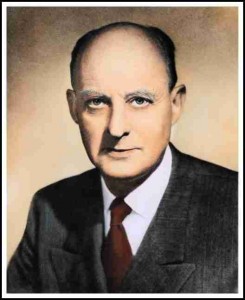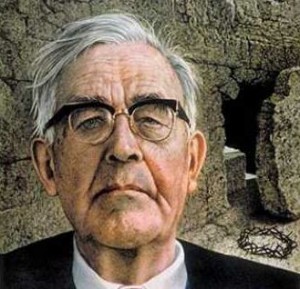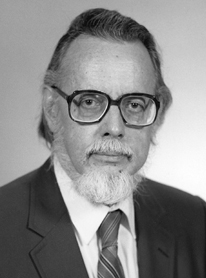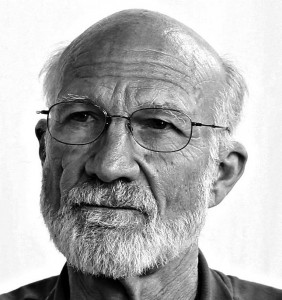Our journey through Richard Hays’ The Moral Vision of the New Testament continues this week with two lengthy chapters in which Hays provides an overview of five representative hermeneutical strategies. This is Hays’ take on five ethicists’ use of Scripture.
(If you’ve gotten behind in the reading or you’re just joining us, I recommend skipping ahead to this section. See the reading schedule here. But make sure to check out last week’s post on three focal images for New Testament ethics.)
Before examining the five different strategies, Hays asks some preliminary questions about how we move from Scriptural exegesis to application for the church.
How can we read the New Testament as a message addressed to us? When we confess these texts to be authoritative for the church, what precisely do we mean?
Hays begins by examining the different ways in which Scripture comes to us, and how they relate to Scriptural authority.
Modes of Appeal to Scripture
- Rules: direct commandments or prohibitions of specific behaviors.
- Principles: general frameworks of moral consideration by which particular decisions about action are to be governed.
- Paradigms: stories or summary accounts of characters who model exemplary conduct.
- Symbolic world that creates the perceptual categories through which we interpret reality.
Next, Hays eschews the sola Scriptura slogan, since he believes “the interpretation of Scripture can never occur in a vacuum.” Scripture may be supreme, but other sources of authority matter.
Other Sources of Authority
- Tradition: the church’s time-honored practices of worship, service, and critical reflection.
- Reason: understandings attained through philosophy and science.
- Experience: religious experience of individuals and of the community.
Theologians have always wrestled with the interplay between Scripture and these other sources. The Reformation was a battle between Scripture and tradition. The Enlightenment wrestled with Scripture and reason. And postmodernity has led to a day in which the battle is between Scripture and experience.
The Enactment of the Word
Hays closes this section with a strong appeal to praxis. The Word is not merely to be understood, but obeyed. As such, it is appropriate to put every interpretation to the “fruits test.” What kind of community is formed and shaped in light of this hermeneutical approach?
In light of these three questions, Hays is ready to give us a crash course in five representative hermeneutical strategies through the approaches of five Christian thinkers.
5 Ethicists Take On the New Testament
 Reinhold Niebuhr: Christian Realism
Reinhold Niebuhr: Christian Realism
The major task of Christian social ethics is to formulate realistic policies, working through existing political systems to achieve a social equilibrium that maximizes equal justice.
- Descriptive: Niebuhr focuses on big theological ideas and themes, not close exposition of the text.
- Synthetic: He uses a narrow range of biblical sources.
- Hermeneutical: Scripture provides us with principles for moral reflection. Niebuhr emphasizes reason and experience in the reflective process.
- Pragmatic: The result is a theology without ecclesiology. The primary focus becomes a Christian’s responsibility in politics.
 Karl Barth: Obedience to the Command of God
Karl Barth: Obedience to the Command of God
Barth seeks to construct a hermeneutic that eliminates the necessity of independent human reckoning and moral calculation.
- Descriptive: Barth gives sustained exegetical treatments of many texts.
- Synthetic: Barth makes a serious attempt to deal with the whole canon. Jesus is the unifying center.
- Hermeneutical: Barth emphasizes rules, not principles. He downplays the role of reason and experience in ethical reflection.
- Pragmatic: A church with confessional identity, uncompromising in its witness to the lordship of Christ in the world.
 John Howard Yoder: Following the Way of Jesus
John Howard Yoder: Following the Way of Jesus
The primary social structure through which the gospel works to change the world is that of Christian communities that empty themselves and relinquish their coercive power.
- Descriptive: Yoder engages in careful exegesis based in historical-critical scholarship.
- Synthetic: Yoder deals with the entire canon, though passion narratives are the “canon within the canon.”
- Hermeneutical: New Testament is primarily a paradigm / symbolic world. Yoder makes use of reason, tradition, and experience.
- Pragmatic: A church as an alternative order that anticipates God’s reconciliation of the world.
 Stanley Hauerwas: Character Shaped By Tradition
Stanley Hauerwas: Character Shaped By Tradition
Only a community already formed by the story of the kingdom of God can begin to read Scripture rightly. We learn the truth through the example of the saints and the church’s liturgy.
- Descriptive: The role of exegesis is less important than role of obedience in understanding.
- Synthetic: Wide-ranging but scattered. (He rarely cites the Gospel of John, for example.)
- Hermeneutical: Stories as paradigms and symbolic world. Of the five ethicists, Hauerwas places the greatest weight on tradition.
- Pragmatic: A profession without practice is worthless. But, Hays asks, does this vision of a professing church actually exist and if Hauerwas does not belong to such a community, is his analysis self-defeating?
 Elisabeth Schussler Fiorenza: A Feminist Critical Hermeneutic of Liberation
Elisabeth Schussler Fiorenza: A Feminist Critical Hermeneutic of Liberation
We undergo the difficult process of sifting through patriarchal texts in order to recover a lost history of women’s experience that has been buried there. The goal is to empower the struggle of women for liberation.
- Descriptive: She engages in exegesis, but through an historical imagination that strains credulity.
- Synthetic: Her method is to subject texts to historical exegesis and ideological critique.
- Hermeneutical: She reinterprets texts through the symbolic world of modern ideology. Experience plays a huge role.
- Pragmatic: The results are small, intensely committed women-church communities.
Some Personal Considerations: Hays’ fourfold understanding of hermeneutics (text, tradition, reason, experience) is helpful, although his discounting of sola Scriptura is unfortunate, since he continues to subordinate the other sources of authority to Scripture (a move which is very much in line with Reformational thinking). He appears to conflate sola Scriptura (Scripture alone as ultimate authority) with solo Scriptura (only Scripture is our authority).
The overview of five ethicists is informative. Hauerwas and Yoder are so similar in their conclusions that I felt myself wishing for a section on how ethical reflection on the New Testament has developed throughout church history. Hays’ inclusion of Fiorenza is generous, but her proposal is so far outside the mainstream of the church as to make this section of limited use for most Bible scholars.
What about you? What do you think about Hays’ four sources of authority? What about his treatment of these different strategies for New Testament ethics?






















